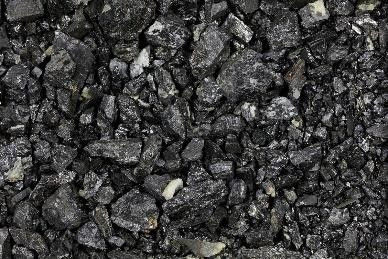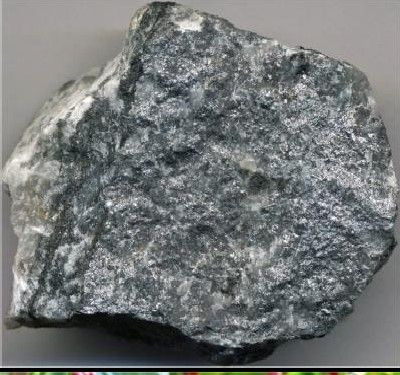Iron, an essential metal, is vital in the construction, automotive, and manufacturing industries. The journey of transforming iron ore into usable products is fascinating and involves several intricate steps. This article will take you through the entire process, from the raw iron ore to the final product, shedding light on the science and technology behind it. Understanding Iron Ore: The Raw Material Iron ore is the fundamental raw material used in iron production. It is a naturally occurring mineral composed mainly of iron oxides. The most common types of iron ore include hematite (Fe2O3) and magnetite (Fe3O4). These ores are mined from the earth and are the starting point for producing iron and steel. Types of Iron Ore · Hematite: With a high iron content of around 70%, hematite is a key ore for iron production. · Magnetite: Slightly lower in iron content, magnetite is valuable for its magnetic properties, making it easier to process. The Mining Process: Extracting Iron Ore The first step in making iron is mining. Iron ore is extracted from the earth through various methods, depending on the location and the type of ore. The most common methods are open-pit mining and underground mining. Open-Pit Mining In open-pit mining, large pits are dug into the earth's surface to extract the ore. This method is used when the ore is close to the surface and is often preferred for its lower cost and efficiency. Underground Mining Underground mining is employed when iron ore deposits are located deeper within the earth. This method involves creating tunnels and shafts to reach and extract the ore, which is then brought to the surface for processing. Crushing and Grinding: Preparing the Ore Once the iron ore is mined, it undergoes a series of crushing and grinding processes to reduce it to a manageable size. The goal is to break down the ore into smaller particles that can be further processed. Crushing The ore is passed through crushers, which break it down into smaller chunks. These chunks are then screened to separate the ore from waste material. Grinding The crushed ore is then ground into a fine powder. This step is crucial as it increases the ore's surface area, making it easier to extract the iron during subsequent processes. Concentration: Separating the Iron from the Waste After grinding, the ore must be concentrated to increase the iron content and remove impurities. This is done through various physical and chemical processes. Magnetic Separation Since magnetite is magnetic, a magnetic separator can separate it from other non-magnetic materials. This process is particularly effective for magnetite ore. Froth Flotation For non-magnetic ores like hematite, froth flotation is used. In this process, chemicals are added to the ground ore, creating a froth that binds to the iron particles, allowing them to float to the surface where they can be collected. Pelletizing: Creating Iron Ore Pellets The concentrated iron ore is then formed into pellets. Pelletizing involves mixing the iron ore powder with water and a binder, then rolling it into small balls or pellets. Why Pelletizing? Pelletizing makes the ore easier to handle and transport. It also improves the efficiency of the blast furnace process, as the pellets allow for better airflow and heat distribution. Smelting: The Heart of Iron Production Smelting is where the magic happens. In this process, the iron ore pellets are heated in a blast furnace to high temperatures, usually around 1,500°C (2,732°F). The goal is to reduce the iron oxides into pure iron. The Blast Furnace A blast furnace is a large, vertical shaft furnace lined with heat-resistant bricks. It is charged from the top with iron ore pellets, coke (a carbon-rich substance), and limestone. The Chemistry of Smelting Inside the furnace, the coke burns in the presence of hot air, generating carbon monoxide. This reacts with the iron oxides in the ore, removing the oxygen and leaving behind molten iron. The limestone acts as a flux, combining with impurities to form slag, which floats on the surface of the molten iron and is removed. Refining: Purifying the Iron After smelting, the molten iron contains impurities like sulfur, phosphorus, and excess carbon. These impurities must be removed to produce high-quality iron. Basic Oxygen Steelmaking (BOS) In the BOS process, pure oxygen is blown into the molten iron, oxidizing the impurities, which are then removed as slag. This process also allows for the adjustment of the iron's carbon content, which is crucial for making different types of steel. Casting: Shaping the Iron Once refined, the molten iron is ready to be shaped into products. Casting involves pouring the molten iron into molds, where it cools and solidifies into various shapes, such as ingots, billets, or complex parts. Types of Casting · Sand Casting: A traditional method where sand molds shape the iron. · Die Casting: A more modern approach that uses metal molds, allowing for greater precision and faster production. Rolling and Forging: Forming the Final Product After casting, the iron products are often subjected to rolling and forging processes to achieve the desired size, shape, and mechanical properties. Rolling In rolling, the iron is passed through a series of rollers to reduce its thickness and make it uniform. This process produces sheets, bars, and rods. Forging Forging involves heating the iron and hammering or pressing it into the desired shape. This process increases the strength and toughness of the iron, making it suitable for heavy-duty applications. Quality Control: Ensuring High Standards Quality control is an essential part of the iron-making process. Various tests and inspections ensure the final products meet industry standards and specifications. Testing and Inspection · Chemical Analysis: To ensure the correct composition of the iron. · Mechanical Testing: To verify the strength, ductility, and other physical properties. · Dimensional Inspection: To check the accuracy of the product's dimensions. Conclusion: The Journey from Ore to Iron Product Making iron is a complex and fascinating journey that transforms raw iron ore into the products we use every day. Each step is meticulously designed to produce high-quality iron and steel products, from mining and concentration to smelting, refining, and shaping. Understanding this process highlights the ingenuity of human engineering and underscores the importance of iron in modern society. Remember the intricate process that brought the iron within it to life the next time you see a bridge, car, or building.















